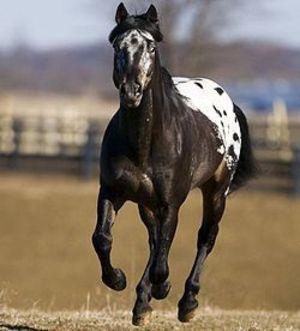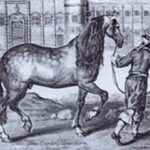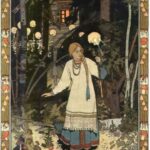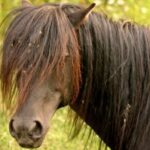The Appaloosa is one of the most recognizable horse breeds in the world. Even non-horsy folk can usually pick out an Appaloosa from a herd. “Appys” are best known for their spotted coats, but they are not the first breed of horse to have spots and certainly won’t be the last. The have a romantic history that is even more interesting than their coat patterns.
A Brief History
Horses with spotted coats were thought to have originated in Asia and moved to Europe. Spotted horses went in and out of fashion. An old Russian breed with spots is the Altai, which may have contributed to the development of the Appaloosa. Spots also appear in some Barbs and used to appear in some Spanish breeds, which were more likely to have been sent to the New World than the Altai.
The Nez Perce tribe of Idaho was one of the few Native American tribes that practiced selective breeding before the white colonists tried to exterminate them. The surefooted and tough Appaloosa was far superior mounts to the US Cavalry mounts. In order to subdue the Nez Perce, their horses were ruthlessly hunted. However, some Nez Perce survive to this day and so does the Appaloosa.
In the 1938, a white man by the name of Claude Thompson started the Appaloosa Horse Club. A hunt was on for not only spotted horses, but horses with good conformation and temperament. The registry was opened and efforts were made to make the breed as we know it today.
General Appearance
Appaloosa aren’t all about their spots. They also must also show secondary characteristics such as striped hooves, pink mottled skin around the eyes and muzzles, a stiff, sparse mane and tail and a friendly nature. Now, since the Appaloosa Horse Club closed the stud book in the 1997, an Appaloosa must also have Appy parents in order to be registered.
There are three basic body types in Appaloosas. The first is a stock horse type that looks like a Quarter Horse in an Appaloosa coat. The second is the racing type, back in the open registry days when dashes of Thoroughbred were added to the Appy mix. The third is the most common type, which falls in between the tall elegance of a racehorse and the sheer bulk of a Quarter Horse.
Appaloosas can have many kinds of spotting patterns or even have barely any spots at all. Sometimes, the spotting pattern changes as the horse ages. Foals born quite dark with a blanket pattern or spots may become roans with spots appearing on the body as well as the blanket.
The Appaloosa Today
Appaloosas are used in all kinds of horse sports as well as being a companion animal. They excel in Western and English disciplines, jumping, driving, gymkhana, trail riding, racing and just about anything else they are asked to do. This is a breed that makes consistently good riding school horses and horses for handicapped therapeutic riding programs.
Appaloosas are generally healthy, except for the eye condition equine recurrent uveitis which can make a horse blind. Blind horses can still lead full lives provided they have gentle and compassionate care. Appaloosas that have the Quarter Horse stallion Impressive in their pedigrees may be subject to hyperkalemic periodic paralysis or HYPP. Any horse with HYPP should never be bred.
References:
“Storey’s Illustrated Guide to 96 Horse Breeds of North America.” Judith Dutson. Storey Publishing, 2005.
“International Encyclopedia of Horse Breeds.” Bonnie Hendricks. University of Oklahoma Press, 1995.
“The Ultimate Horse Book.” Elwyn Hartley Edwards. Dorling Kindersley; 1991.
Shedding Light on Night Blindness in Appaloosas.” Stacy Oke, DVM. “The Horse.” August 2008. http://www.thehorse.com/ViewArticle.aspx?ID=12595
Appaloosa Horse Club. “Ringing Light to HYPP.” http://www.bringinglighttohypp.org/
(I also used to have a beat-up hardcover book about Appaloosas by Claude Thompson, which I stupidly sold.)
Personal experience







